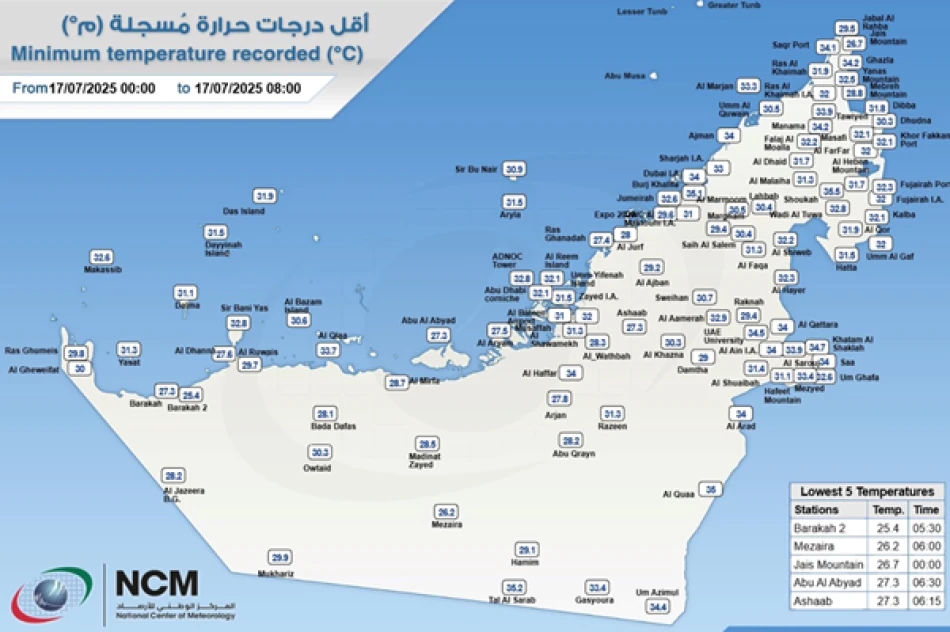
Ras Al Khaimah Records UAE's Lowest Temperature at Barakah 2
UAE Records Unusually High Winter Low of 25.4°C, Signaling Persistent Climate Warming Trend
The UAE's National Center of Meteorology reported Thursday that the country's lowest recorded temperature was 25.4°C (77.7°F) in the Barakah 2 area of Al Dhafra region at 5:30 AM local time—a figure that underscores the nation's increasingly warm climate patterns and challenges traditional notions of seasonal temperature variation in the Arabian Peninsula.
A Winter Morning That Feels Like Summer Elsewhere
The temperature reading from Barakah 2, located in the western Al Dhafra region near the country's nuclear power plant, represents what many climate scientists would consider a mild summer evening in temperate regions. For context, this "cold" morning in the UAE was warmer than typical summer nights in cities like London or San Francisco.
The timing of the measurement—during the pre-dawn hours when temperatures typically reach their daily minimum—makes the reading particularly significant. In most global locations, early morning temperatures represent the coolest part of the 24-hour cycle, yet the UAE's minimum remained well above what most of the world would consider comfortable room temperature.
Regional Climate Patterns and Economic Implications
Energy Consumption and Infrastructure Stress
Such persistently high temperatures, even during winter months, place continuous strain on the UAE's energy infrastructure. The country's massive air conditioning demands show little seasonal relief, maintaining pressure on the electrical grid and keeping energy costs elevated year-round. This contrasts sharply with temperate economies that benefit from natural seasonal cooling periods.
The Barakah region's reading is particularly noteworthy given its proximity to the UAE's nuclear power facility, which provides crucial baseload power for the country's energy-intensive cooling needs. The persistent heat underscores why the UAE has invested heavily in nuclear energy as a reliable, carbon-free power source.
Comparison with Regional Neighbors
While the UAE's winter temperatures remain elevated, the country's climate patterns align with broader regional trends across the Gulf Cooperation Council states. Saudi Arabia, Qatar, and Kuwait experience similar temperature floors during winter months, though the UAE's coastal location and urban heat island effects in cities like Dubai and Abu Dhabi can amplify warming trends.
The reading also highlights the stark climate divide between the UAE and other major global financial centers. While New York, London, and Tokyo experience genuine seasonal temperature variations that can span 40-50°C annually, the UAE's temperature range remains compressed within a much narrower band.
Long-term Climate Trajectory
The 25.4°C minimum temperature fits within established climate projections for the Arabian Peninsula, where rising global temperatures are expected to push already-hot regions toward the limits of human comfort. Climate models suggest that winter temperature minimums in the UAE will continue rising, potentially reaching levels that eliminate any meaningful seasonal temperature variation.
This trend carries implications beyond comfort, affecting everything from agricultural planning to tourism seasonality. The UAE's traditional "winter season" for outdoor activities and tourism may gradually compress as even the coolest months maintain temperatures that many visitors find uncomfortably warm.
For a nation that has built much of its economic diversification strategy around year-round business activity and tourism, these climate patterns represent both a challenge and an adaptation opportunity, driving continued innovation in cooling technologies and climate-controlled environments.
 Layla Al Mansoori
Layla Al Mansoori







